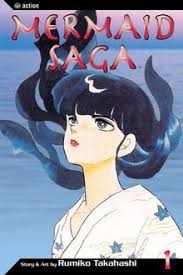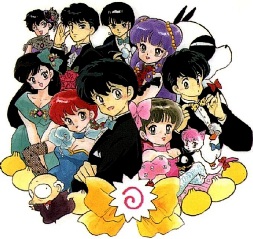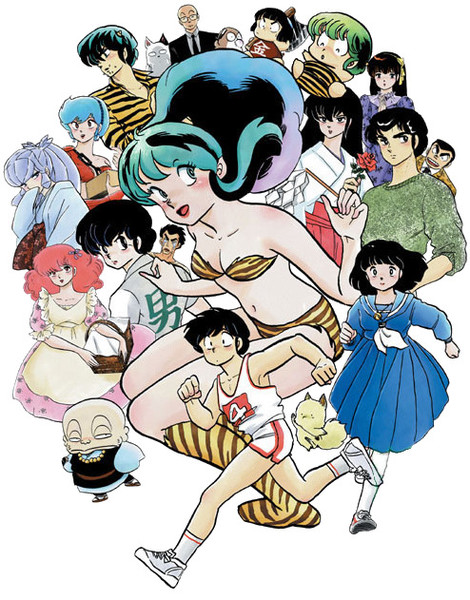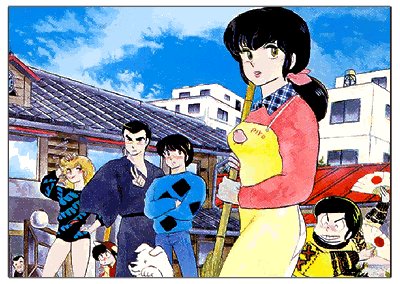by Tom Speelman
Rumiko Takahashi is on top of the world. The legendary author and manga icon just won the Grand Prix at this year’s FIBD Angoulȇme after finally being named to the Eisner Award Hall of Fame last year (on her 4th nomination). This also means Takahashi will marshal the next FIBD festival and oversee a sprawling, curated exhibition of her work.
At one time, Takahashi was the world’s richest cartoonist. Every work of hers (and she has a new series launching next spring) has been a worldwide bestseller, been turned into anime and movies, and imprinted on generations of manga readers in Japan, America and elsewhere. Her work spans both shoujo (girls) and shonen (boys) manga putting her on the short list of GOAT cartoonists.
If you’re new to the world of manga, you’re probably wondering what Takahashi’s best known works are, how to find them and where to start reading. Well, let’s dig in, shall we?
Urusei Yatsura (1978-1987)
Originally published in Weekly Shonen Sunday (which has serialized most Takahashi works since), this is about Lum, an alien princess who winds up living with a perverted, bad luck-prone teenage moron named Ataru. Despite basically inventing the modern “harem” genre and a steady merch/cosplay presence, Urusei Yatsura has had a sporadic release schedule by Viz Media in North America. However, at last year’s SDCC, Viz announced the series was coming back in 2-in-1 omnibuses, complete with new translation! The first omnibus comes out February 19th physically and digitally and is available for preorder now.
Maison Ikkoku (1980-1987)
Created two years into Yatsura’s run and serialized biweekly in the weekly magazine Big Comic Spirits, Ikkoku is about the inhabitants of the titular building, a run-down apartment complex, and the budding romance between college student Yusaku and the building’s new manager, the widowed Kyoko. Ikkoku was originally published flipped by Viz monthly, with chapters out-of-order or missing but was later republished correctly in book form.

Published over a decade in Weekly Shonen Sunday and quite short at 16 chapters, this mature horror is a bit of a thematic departure for Takahashi. In the vein of “haunted protagonist wanders the world” ala Frankenstein & Monster, Mermaid Saga follows 500-year old Yuta, made immortal by eating mermaid flesh and cursed to either die or turn into a monster. Yuta wanders the world searching for a cure while encountering others who also ate mermaid flesh and had their lives ruined. Mermaid Saga is available from Viz in four volumes.

This is the Big One. The manga that broke Takahashi through in America. Ranma ½ is an acknowledged classic and is considered by many to be one of the most prominent trans narratives in comics…even though it’s not.
People think so because of the series’ high concept: on a training journey in China, teen martial artist Ranma Saotome and his dad fell into magical springs that curse them to, whenever doused with cold water, change into whatever drowned in that spring long ago. Ranma’s dad becomes a panda while Ranma turns into a girl nicknamed “Ranko (as ‘-ko’ is a female suffix in Japanese, y’see.).” In her old, much missed “Lost In Transition” column about reassessing comics with trans/”trans” narratives at the late, great Comics Alliance, Charlotte Finn (full disclosure: a former coworker and friend of mine) commented that Ranma’s more of a “forced feminization” story—Ranma actively doesn’t want to be a girl and protests being called such—and hypothesizes that “Ranma isn’t a boy who turns into a girl. Ranma is a cisgender boy who turns into a transgender boy.” Finn argued that Ranma ½ isn’t about a transgender person at all but it’s become muddled as such. Regardless, Ranma ½ is available in print as single volumes and 2-in-1 volumes.
One-Pound Gospel (1987-2006)
Published sporadically for two decades, this is an odd one. Kosaku is a gifted boxer who went pro virtually right out of high school and he’s a champ in the making. Unfortunately, he loves to eat, so much so that he’s moved up a weight class that he doesn’t have the frame for. Enter novice nun Sister Angela, who takes Kosaku on as a personal project and tries to break his gluttony. But can they avoid falling in love?
Collected in 4 volumes in 2008 by Viz after the series finished, this is readily available in print.
Inuyasha (1996-2008)
15-year-old Kagome, whose family runs a shrine, gets dragged down an enshrined well by a demon and winds up in Japan’s Sengoku period. She meets the imprisoned half-dog demon Inuyasha, who she frees in return for him fighting the demon. Kagome turns out to be the reincarnation of Inuyasha’s great love, Kikyo, a priestess who protected the powerful Shikon Jewel and had it burned with her upon her death. Stuck inside Kagome’s body, the jewel is released but gets taken and accidentally shattered into thousand of pieces, which Kagome and Inuyasha must retrieve to protect them from the demon Naraku.
Full of great characters, brutal action, clear storytelling and rich character and world building, Inuyasha is probably Takahashi’s most famous work and deserves its iconic status. It’s available in regular and 2-in-1 books
form from Viz.

This is Takahashi’s most recent series and also the only one of her works to be simultaneously published digitally in America and Japan. It follows Sakura, a high school student who can see ghosts due to being briefly abducted by one as a kid, and her classmate Rinne, a “sort-of” shinigami (death god, ala Death Note and Bleach) whose job it is to lead regret-filled spirits to the wheel of reincarnation in the sky so they can be reborn. A fun mix of supernatural adventure and broad comedy like Inuyasha, Rin-Ne is still being published in print by Viz.
As you can see, Takahashi has a huge body of work. But it’s all fairly accessible and hopefully you can find something you want to dig into, pick up from a bookstore or your local library, and start reading. If you do, odds are you’ll join the billions of Takahashi’s fans all around the world.
[Disclosure: Clicking on affiliate links may result in payments to this site.]













Simply the Empress of comics!
Comments are closed.